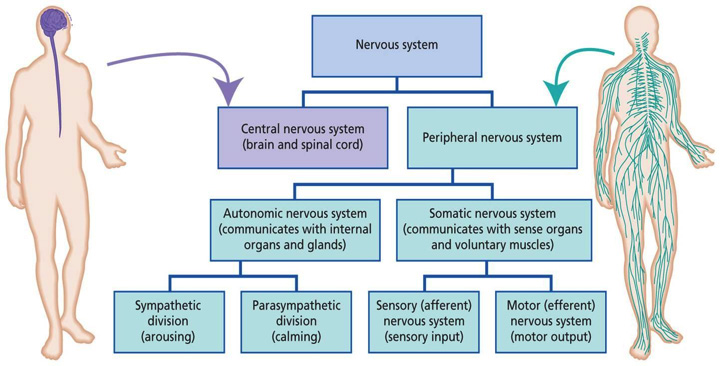


The two systems have complementary functions, operating in tandem to maintain the body’s homeostasis. The sympathetic nervous system is involved in preparing the body for stress-related activities the parasympathetic nervous system is associated with returning the body to routine, day-to-day operations. It can be further subdivided into the sympathetic and parasympathetic divisions. The autonomic nervous system controls our internal organs and glands and is generally considered to be outside the realm of voluntary control. Each nerve is basically a two-way superhighway, containing thousands of axons, both efferent and afferent. Sensory neurons, carrying sensory information to the CNS, are afferent fibers (afferent means “moving toward”). Motor neurons, carrying instructions from the CNS to the muscles, are efferent fibers (efferent means “moving away from”). It is involved in the relay of sensory and motor information to and from the CNS therefore, it consists of motor neurons and sensory neurons. The somatic nervous system is associated with activities traditionally thought of as conscious or voluntary. The PNS has two major subdivisions: the somatic nervous system and the autonomic nervous system. The peripheral nervous system is made up of thick bundles of axons, called nerves, carrying messages back and forth between the CNS and the muscles, organs, and senses in the periphery of the body (i.e., everything outside the CNS). The nervous system is divided into two major parts: (a) the Central Nervous System and (b) the Peripheral Nervous System.


 0 kommentar(er)
0 kommentar(er)
